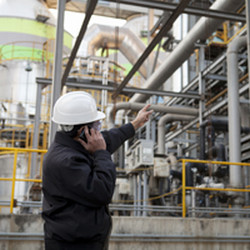In-service inspection for power plants
A typical electric power plant of 500 megawatts (either nuclear or conventional) can have up to 4 kilometres of pipe work carrying superheated steam at pressures up to 400 bars and temperatures up to 580 degrees Celsius. The stresses produced by the extreme pressures and temperatures can result in cracks leading to pipe ruptures. Failure to promptly detect cracks once initiated can cause catastrophic accidents with appalling injuries and widespread power cuts. During scheduled outages when the power plants shut down for maintenance and repair, pipelines are inspected with non-destructive testing techniques. The HOTSCAN(opens in new window) project received funding under the Seventh Framework Programme (FP7) to develop a monitoring system that would be permanently installed on pipelines. Once installed during a scheduled outage, the new system would continuously inspect all welds while the plant is in service. Ultrasonic guided wave testing was identified as the most suitable method to detect structural defects and monitor their growth. In particular, guided waves can propagate in cylinders and different elongated structures, enabling inspection of a large area. This technique had been successfully employed at ambient temperatures, but the extremely high temperatures in power plants presented a great challenge for HOTSCAN researchers. The long range ultrasonic technique proposed by HOTSCAN researchers is based on an array of transducers placed around a pipe to transmit sound waves and receive the echoes. The transducers were manufactured using a special type of lithium niobate crystal that retains its piezoelectric behaviour at temperatures as high as 600 degrees Celsius. Dedicated software was also developed to analyse the data received from the array of transducers. The HOTSCAN system can identify cracks having cross section greater than 1 millimetre. This reduces the probability of a power plant failure due to steam pipe ruptures to below 1 in 10 000. Such continuous inspection of all welds reduces the planned outage time by up to 5%, resulting in significant cost savings.







